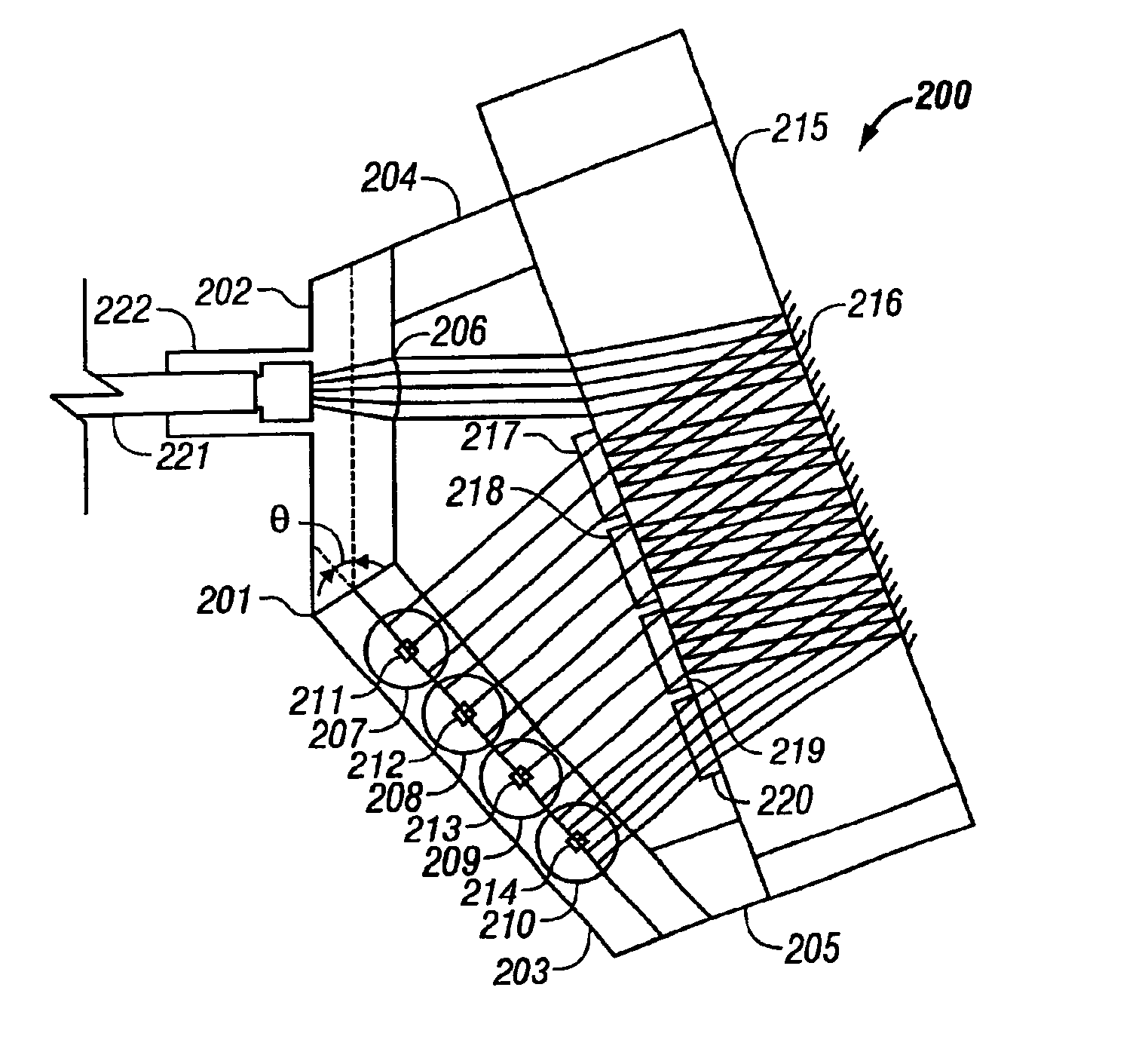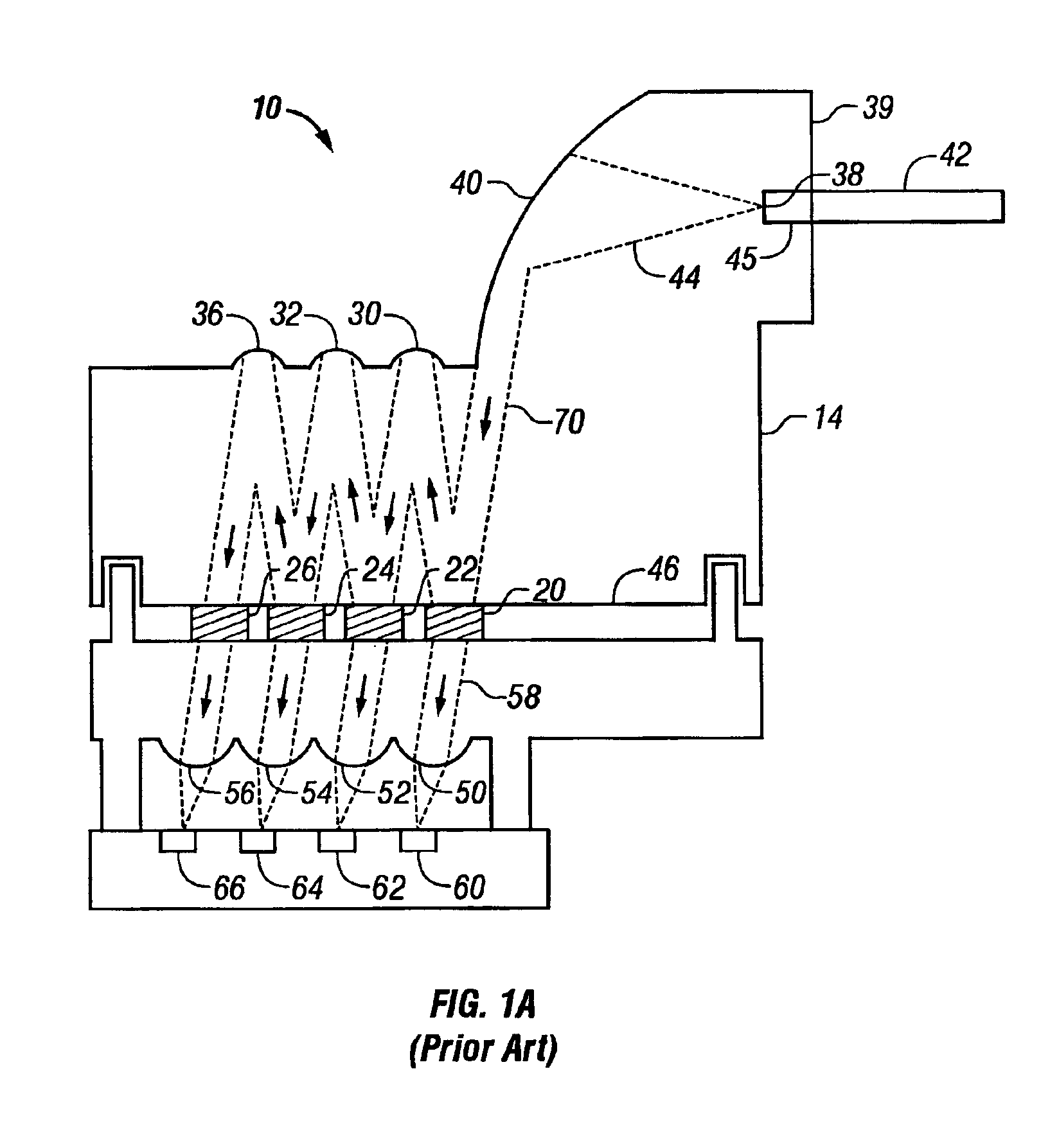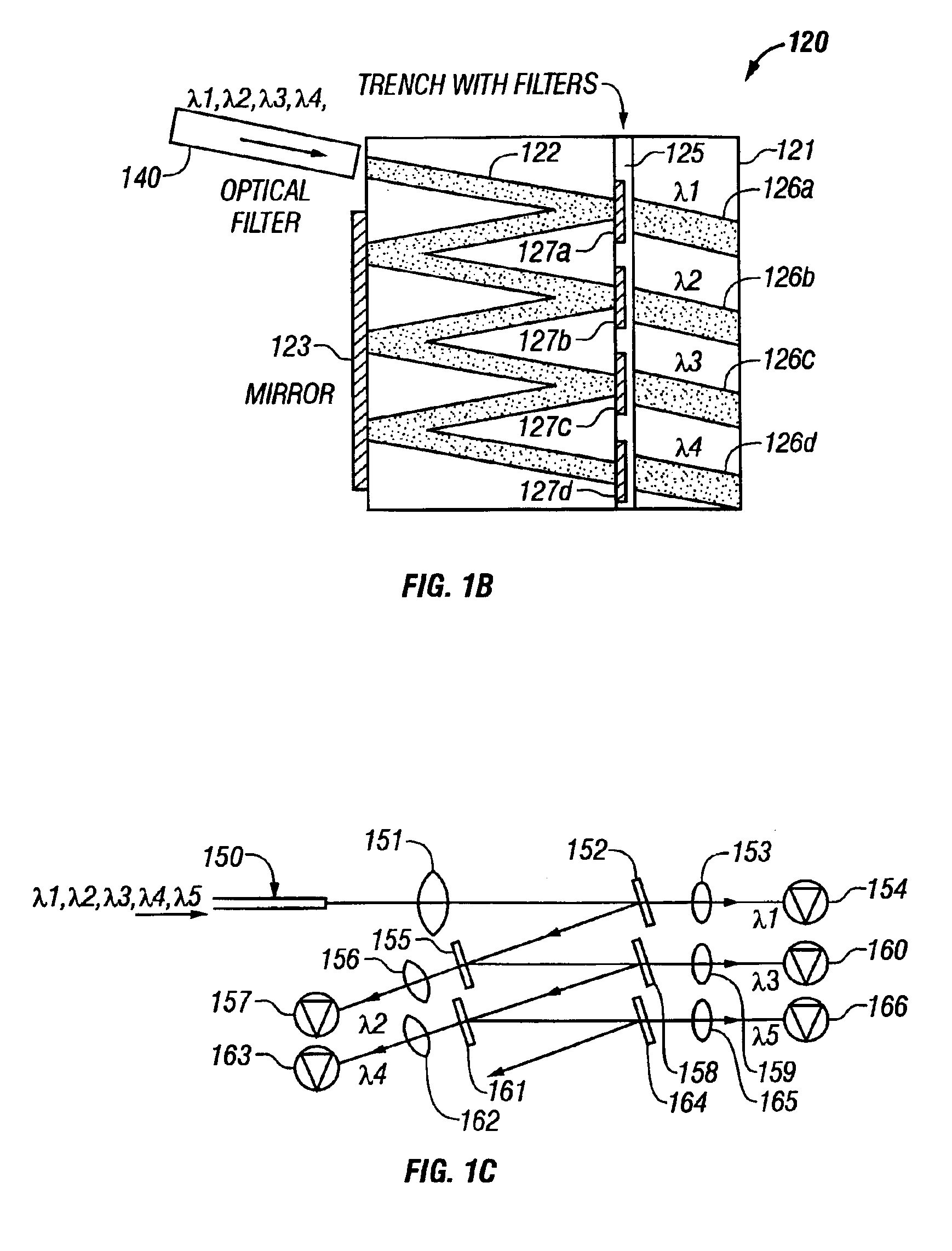Filter based multiplexer/demultiplexer component
a filter-based multiplexer and component technology, applied in multiplex communication, instruments, other domestic objects, etc., can solve the problems of large insertion loss, large manufacturing cost, difficult fabrication, etc., and achieve the effect of reducing insertion loss, reducing insertion loss, and requiring little alignment tim
- Summary
- Abstract
- Description
- Claims
- Application Information
AI Technical Summary
Benefits of technology
Problems solved by technology
Method used
Image
Examples
Embodiment Construction
FIG. 2A shows a component 200 according to the present invention. Component 200 can be a multiplexer or a demultiplexer and includes a lens block 201 and a mirror-filter block 215. Each of lens block 201 and mirror-filter block 215 can be molded as a separate piece or, alternatively, lens block 201 and mirror-filter block 215 can be molded as a single piece. The only alignment required at assembly is the relative alignment between lens block 201 and mirror-filter block 215 and the placement of optical filters 217 through 220 and optical devices 211 through 214.
Lens block 201 includes a collimating portion 202 and a lens-array portion 203 formed from a material that is transparent at the wavelengths of light transmitted on optical fiber 221. Collimating portion 202 includes placement for a collimating lens 206 so that light transmitted from optical fiber 221 is collimated, if component 200 is a demultiplexer. Collimating lens 206 couples light between optical fiber 221 and lens block...
PUM
 Login to View More
Login to View More Abstract
Description
Claims
Application Information
 Login to View More
Login to View More - R&D
- Intellectual Property
- Life Sciences
- Materials
- Tech Scout
- Unparalleled Data Quality
- Higher Quality Content
- 60% Fewer Hallucinations
Browse by: Latest US Patents, China's latest patents, Technical Efficacy Thesaurus, Application Domain, Technology Topic, Popular Technical Reports.
© 2025 PatSnap. All rights reserved.Legal|Privacy policy|Modern Slavery Act Transparency Statement|Sitemap|About US| Contact US: help@patsnap.com



